Like interconnected gears, Water Balance is the relationship between different chemical measurements of your pool water. It’s an extremely important aspect of pool care. A good combination of chemical water balance as well as proper circulation and filtration, is required to keep your water clean and clear.
The Importance of Balanced Water Chemistry
Each type of pool (concrete, vinyl, fiberglass, tile) has slightly unique differences when it comes to water balance and the process of maintaining the water chemistry of the pool. Here’s a look at water balance for a vinyl liner pool.
Not balancing your pool water properly? There are several drawbacks to ignoring water balance, such as the many Recreational Water Illnesses that can affect a person’s health. The likelihood of breaking out in skin rashes or eye irritations is high in a poorly balanced, filtered and sanitized pool.
Improper balancing of chemicals can also affect the health of your liner as well as your other pool equipment. You can develop scaling and even stains on the liner. Balancing chemicals are not usually ones that will stain the liner, but improper water balance makes it easier for stains to form on a vinyl liner.
Balancing Total Alkalinity in a Vinyl Pool
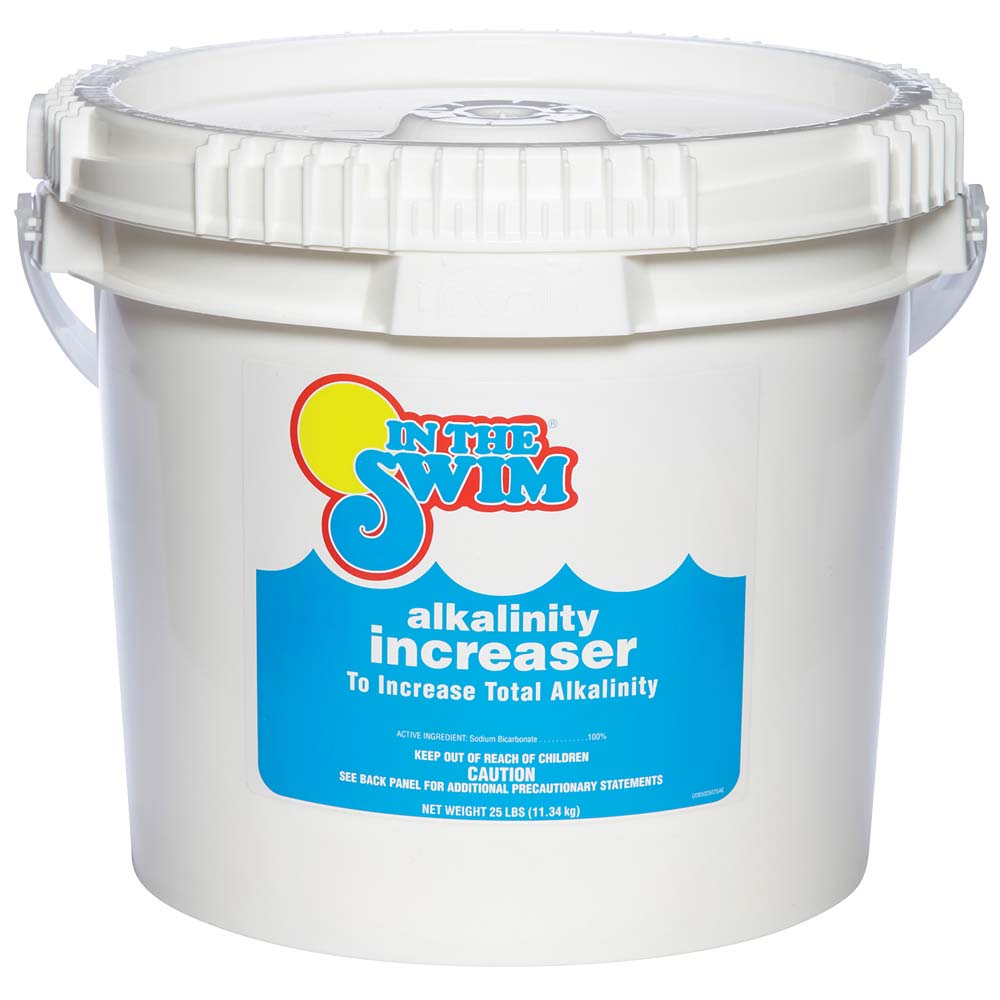
The Total Alkalinity reading for your swimming pool should be between 80-120 ppm (parts per million). If your alkalinity is too high, you can have signs of scaling and the water will probably be very cloudy. In this case, the pH will probably be very high also. By adding pH down, or pH decreaser, you will be lowering the pH as well as the Alkalinity.
If your alkalinity is too low, you may also have a low pH condition, which is very corrosive to pool liners, and rubber seals and o-rings. As mentioned above, it is really important to balance the alkalinity first and then then adjust your pH level. Without the proper level of alkalinity, your pH will seek it’s own level, and resist adjustments that you make – or “bounce” right back to where it was before adding your pH up or pH down chemical. Add alkalinity increaser if your levels are below 80 ppm.
Balancing pH in a Vinyl Pool
pH should be between the range of 7.2 – 7.6. If pH is too high, you can see scaling and calcium deposits on your pool, and perhaps algae problems. The water may also have cloudiness issues. If the pH is too low, you will have eye and skin irritations. Low pH – below 7.0, begins to become acidic, and acidic water will cause a vinyl liner to weaken. Use pH Increaser to raise pH level. It is important to remember that the Alkalinity level affects the pH level. If the pH is out of line, always check and balance the alkalinity first, then balance the pH.
Balancing Calcium Hardness in a Vinyl Pool

Calcium hardness is also very important to the chemical balancing of your vinyl liner swimming pool. Calcium for a liner pool can be a bit lower than a plaster pool, in the range of 150-250 ppm. If a vinyl liner’s calcium level is too low, this soft water situation could lead to foaming and other water problems, and can harm the vinyl.
If the calcium hardness level is very high (over 400 ppm), you could begin to see signs of scaling, a white flaky crust, on the pool and equipment surfaces. Your skin could begin to feel itchy. The water, itself, will not feel silky smooth (because it is very “hard”). For calcium levels that are below 150 ppm, you will need to add some calcium increaser. If the calcium is very high, it is best to empty some of the water and refill with softer water.
Balancing Sanitizer in a Vinyl Pool
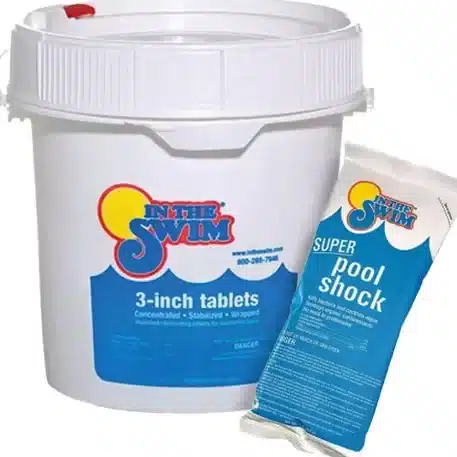
If continual, high levels of pool chlorine can dry out a liner, as it sucks out the material that makes vinyl soft and pliable. High chlorine levels also fade the colors of a pool liner, giving you what’s known as a “bleached” pool liner. My recommendation for chlorine is to use less of it – by investing in a Nature2 or Frog mineral system. These units use silver and copper ions to help purify your water, and can reduce your chlorine usage by half. The money you save in chlorine will be spent on the mineral cartridges, so no immediate savings, but in the long run, your liner should last much longer.
Shocking the pool can also be hard on a vinyl liner. If you are going to use granular or powdered pool shock, make sure to mix the shock in a bucket of water before adding it to the pool. You do not want to have undissolved granules landing on the liner, it can instantly bleach out the color, or damage the vinyl. Another option is to use a non-chlorine shock, instead of chlorine shock.
Cyanuric acid is sometimes considered a component of water balance, and it is sold on our Water Balancers page. But it’s not really part of water balance. Adding stabilizer to the pool, to the level of 30-50 ppm, will protect the chlorine molecules from the sun, “stabilizing” them from the effects of the sun.
Using Minerals in a Vinyl Pool
When you have a vinyl liner pool, you want to test for minerals in the water. If you have minerals in your water, especially well water, they can stain a vinyl liner pool. it is easier to try to prevent the minerals from staining the pool liner or the pool steps, than it is to remove them.
We have products like Metal Free which will lock up these metals, keeping the liner stain free. If you already have stains on your liner, we have many stain chemicals that will remove stains, and there is also a pool stain test kit that can identify the stain and tell you how to treat it.


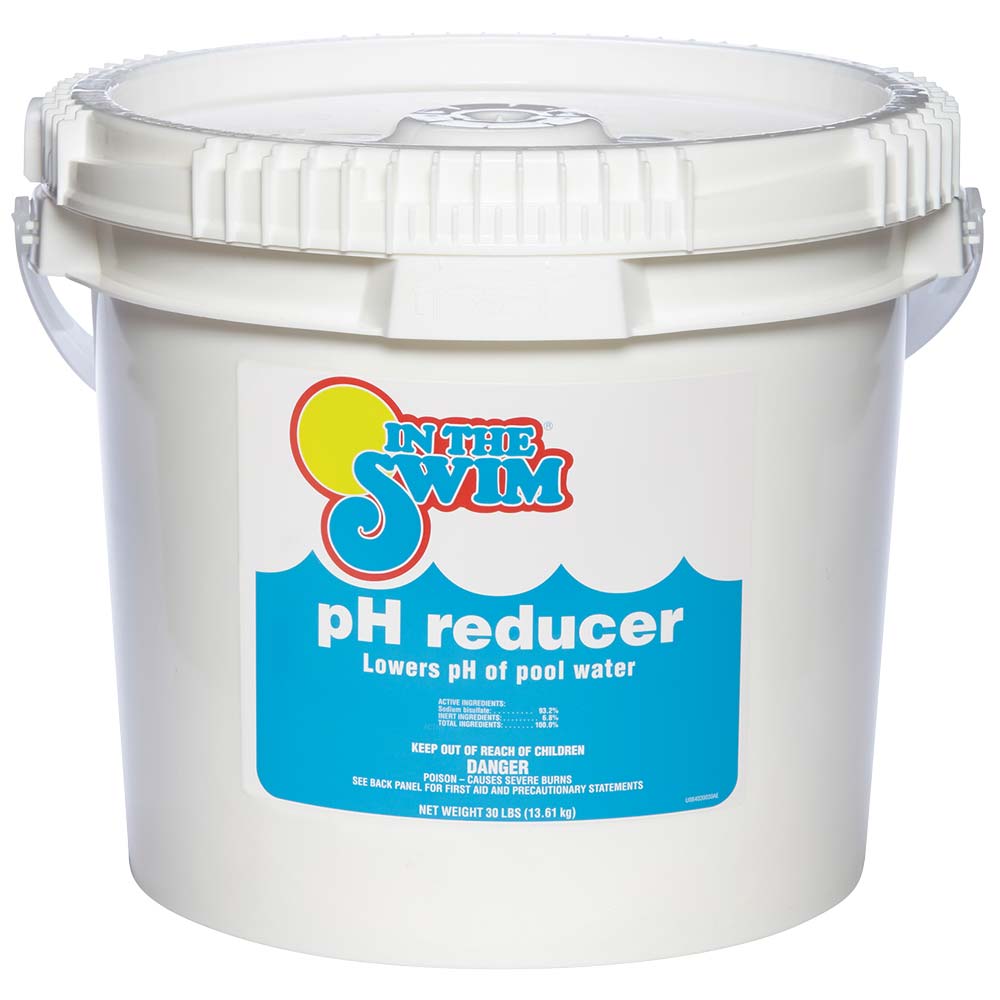
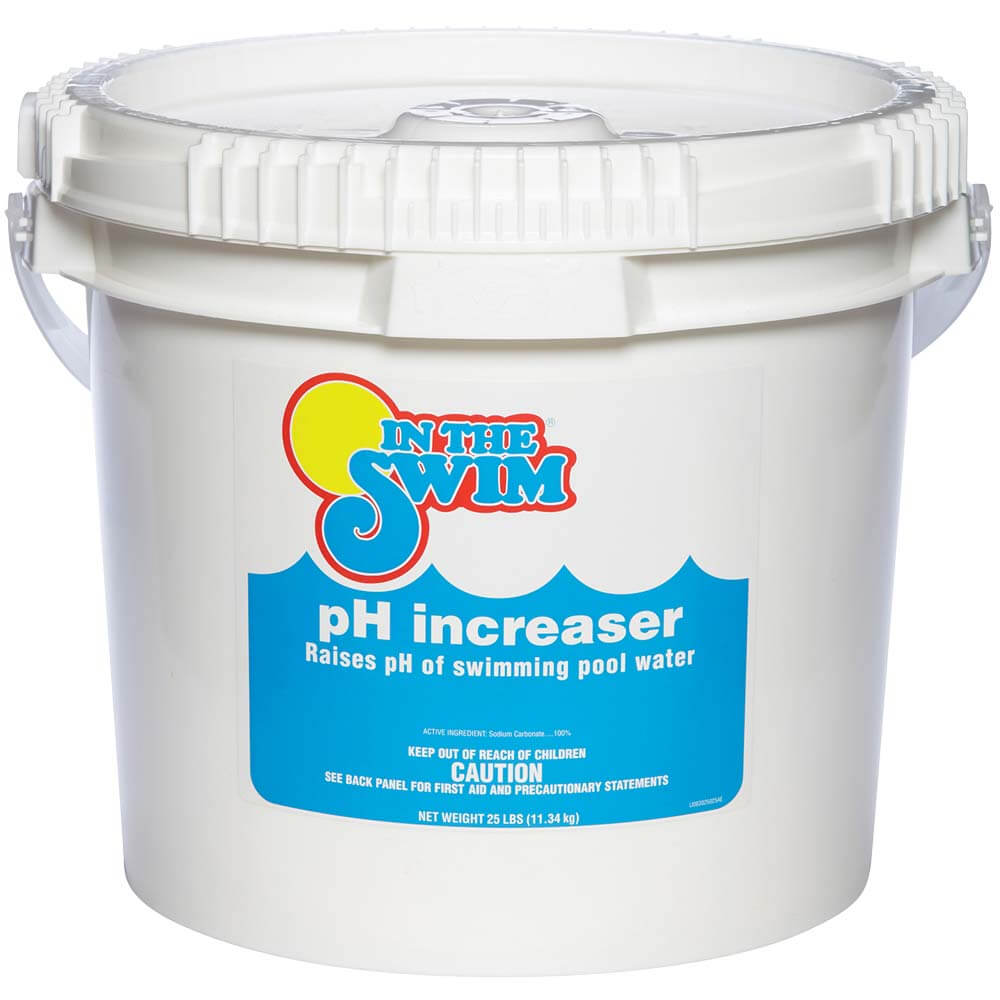
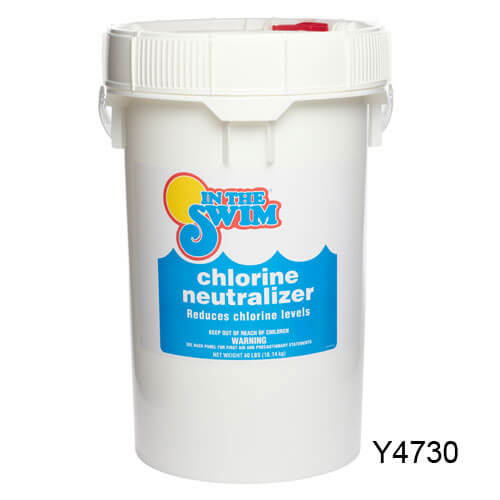
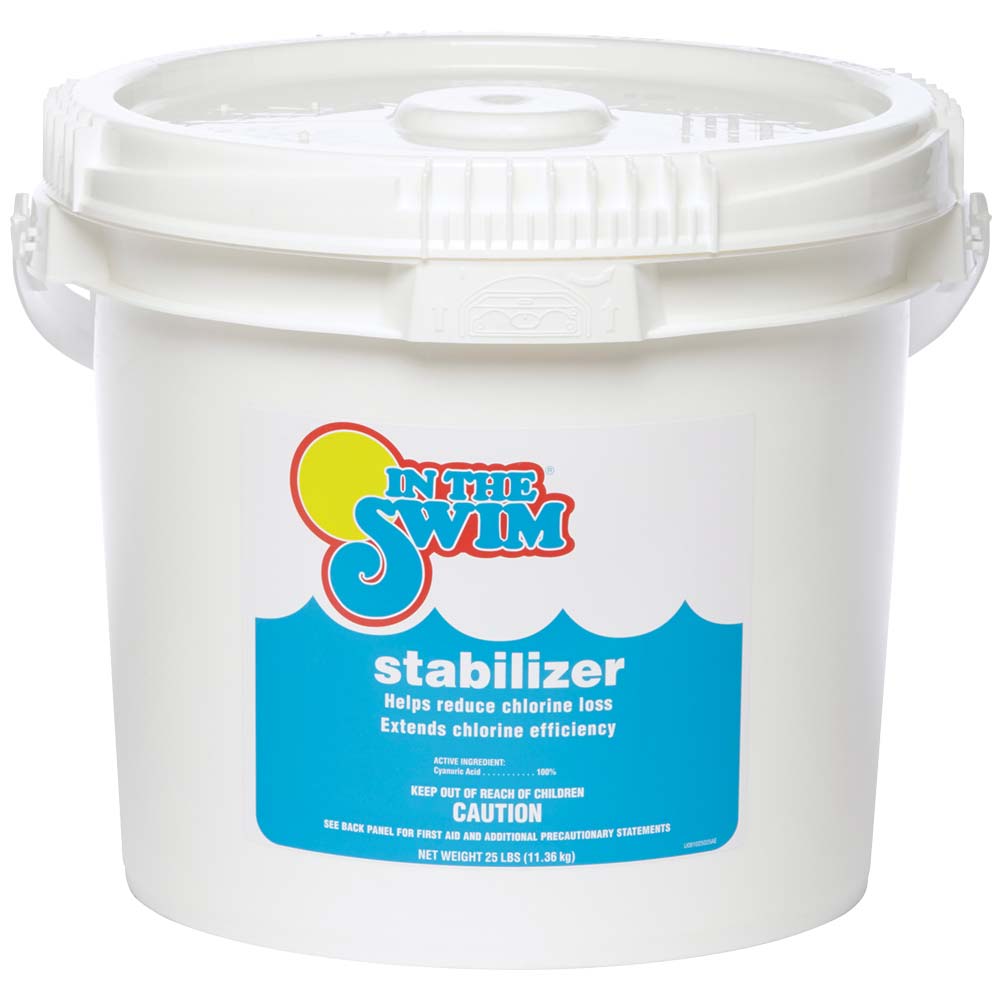
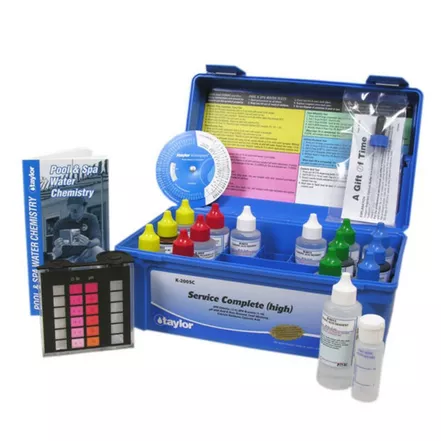
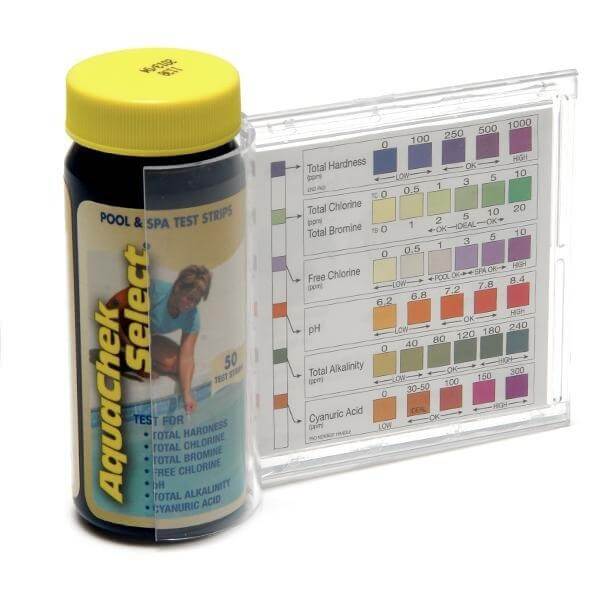
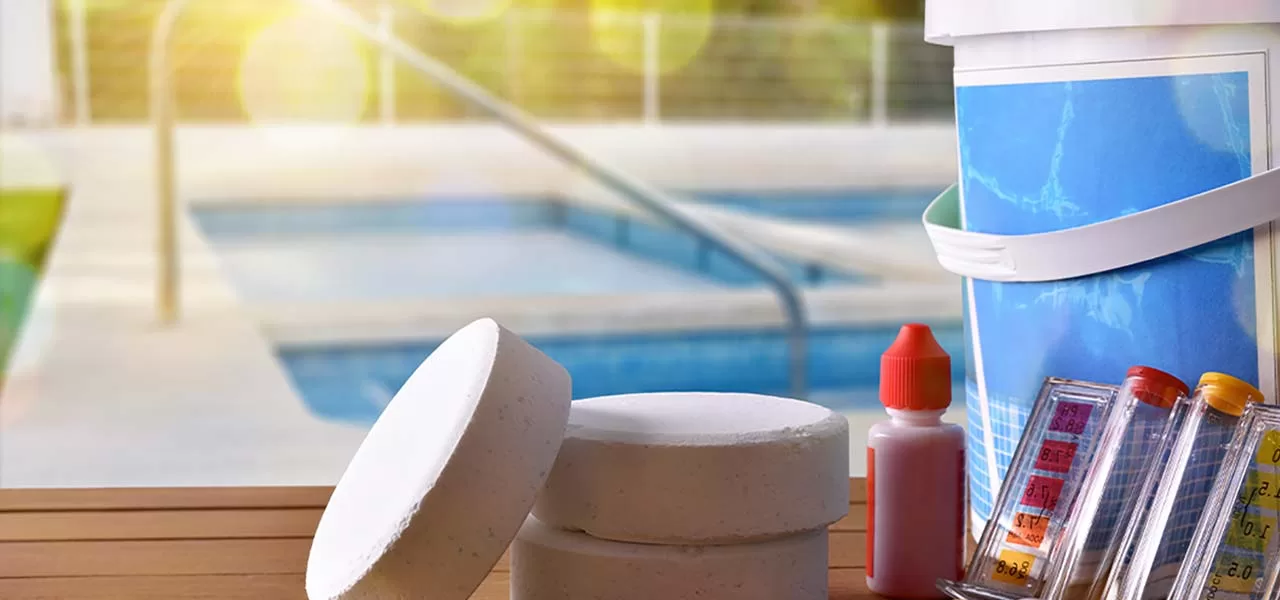
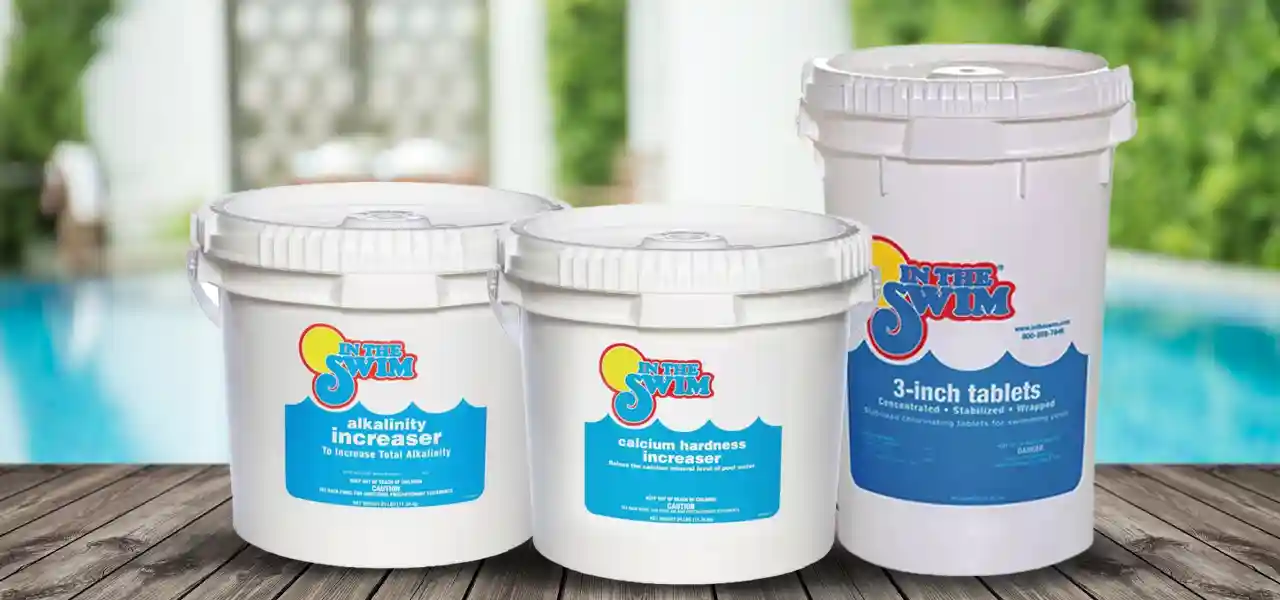
Hi Davy – love your articles – very helpful. I’m having vinyl liner replaced and pool refilled with fresh water. Swimming season is over for us so we will close pool. My question is does the new water need to be balanced before we close or can we do it in the spring upon opening? Thanks.
Yes, definitely balance the water now. Especially pH, Alkalinity and Calcium hardness, to protect the new liner. You won’t need to add chlorine Stabilizer now, but you could, as it does not deplete over time. But do make sure pH and Hardness are spot on for winter. Thanks for the question, and the compliment 🙂
New pool owner! I have a new vinyl this year and am just learning. I just had my water tested and I have low alkalinity but a pH of 7.4? If I raise the alkalinity will my pH be ok?
Hi Jeremy, as you raise your Alkalinity using Alkalinity Increaser, it will also raise your pH somewhat. Give it a day or two to stabilize and check pH again. If it is above 7.8, then adding a pH Decreaser is in order, which will also lower your Alkalinity. Again, give it a day or so, and test again. Eventually both will come in line, it takes a little bit of see-saw to get there. Using chlorine tablets will help reduce pH levels too, as tabs have a fairly low pH (as opposed to liquid chlorine, which has a very high pH, and salt systems, which tend to drive pH higher from sodium hydroxide production). The auto cover does not make much of a difference, but do keep it open after shocking the pool, to allow high chlorine levels to gas-off the surface, and to also protect the material from high chlorine levels.
Hi Davy, i have the odd scenario of very high TA (240+) but good PH (7.6). Our water is also very hard here (500+). TC, FC are ok 3 and 3 but CY Acid is high at 100.
I’m at a loss on how to lower the TA, without impacting the PH. I read in your article to balance TA first but how is this possible, as the products used will lower both TA and PH (PH Minus etc). I read about an acid ‘slug’ but there seems to be a lot of arguments about whether that has any impact (for the same reason i mentioned about most TA/PH plus/minus products must impact both). This is for a vinyl pool too? Any advice would be very appreciated.
Hi Jaimie, if the pH is 7.6, and you are not having any issues like cloudy water, algae or a higher pH level – you may leave it alone. 240 Alk is very high, but… if the pH level is good, (and 7.6 is good), and no other water quality issues are present, then okay. More concerning is the high cya level. If your tap water is lower alkalinity, and it should be -0- cya, then I would consider replacing half of the water with fresh, and lowering both cya and alk, for better overall water balance.
Hi Davy,
Thank you for coming back to me.
The water is actually quite cloudy, not terrible but not clear (I can see the definition of the patterned bottom fine but it is cloudy). When I rinsed off the filter today, it almost looked like milk running out of it!. Our tap water is very hard here and so from what you mention above, I think replacing the water would not impact the CYA in a positive way but I’ll test it and check the reading. Thanks again, it must be a lot of effort to reply to all us folks (and it is really appreciated).
The issue was the alkalinity and the cya, not really the hardness, not much you can do there – your tap water certainly has -0- cyanuric acid, and hopefully has a much lower alkalinity level, Use your test kit to check…
In this article, you state that Calcium Hardness in a vinyl pool should be 150-250. Down further you state it should be 200-400. Which should it be?
Hi Marla, 200 ppm would be best, however if you have only 150 ppm, and want to save some money, 150 ppm could be acceptable, but only in a vinyl pool.